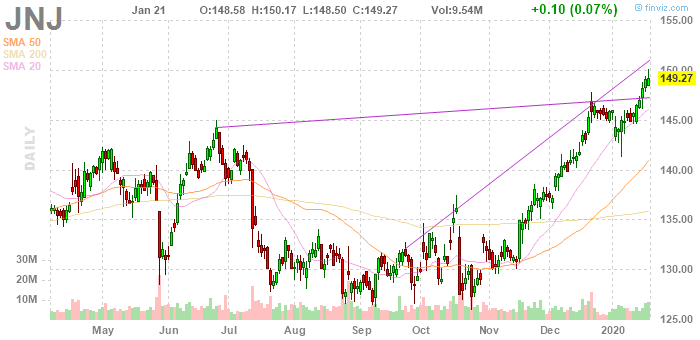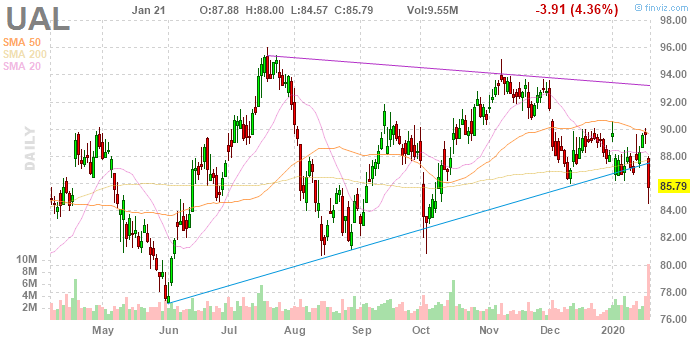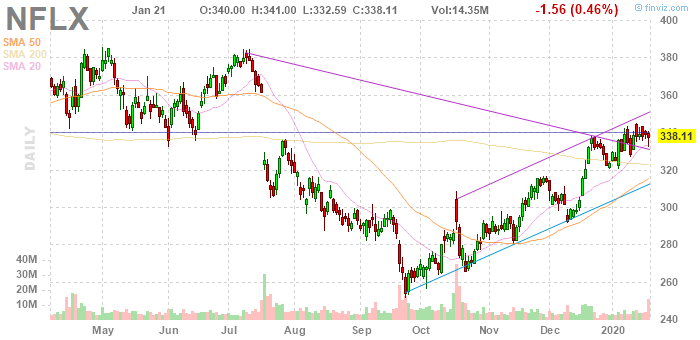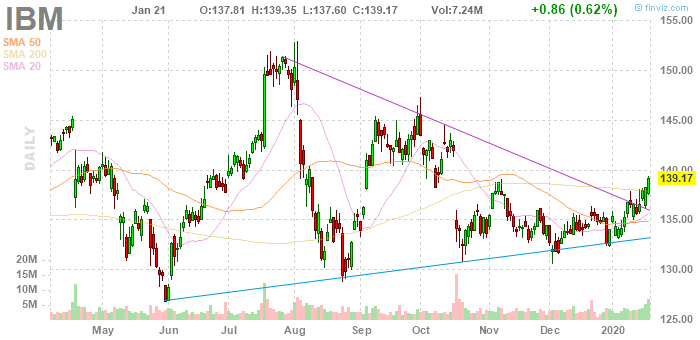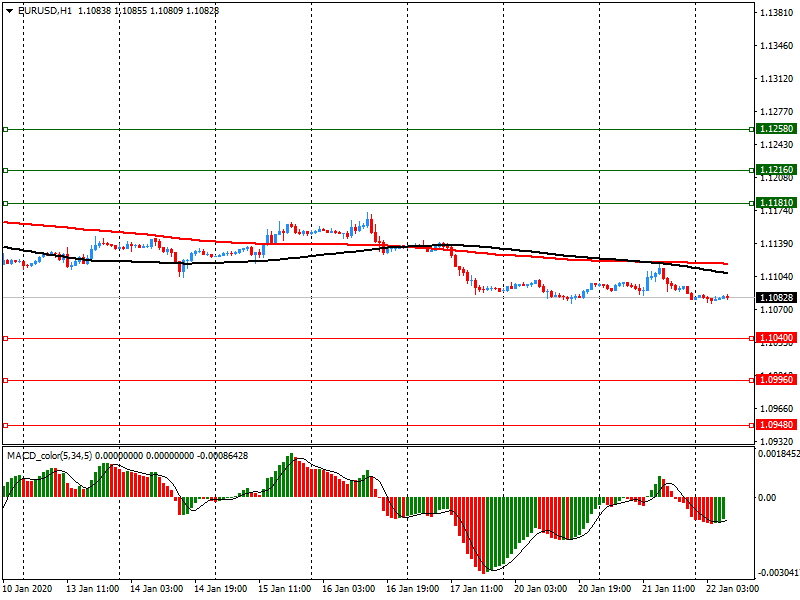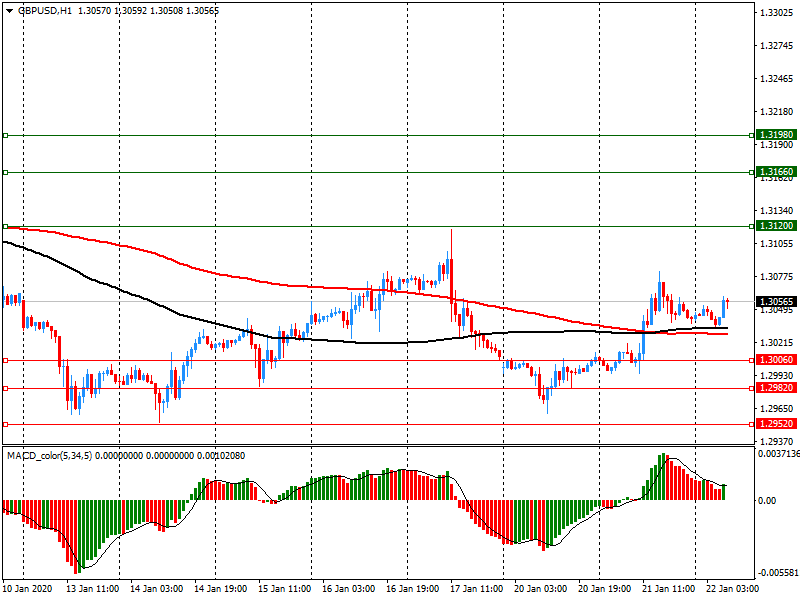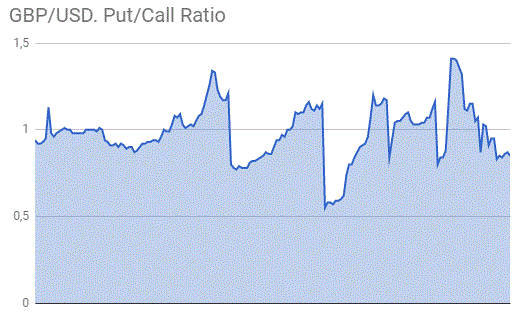- Analiza
- Novosti i instrumenti
- Vesti sa tržišta
Forex-novosti i prognoze od 22-01-2020
| Time | Country | Event | Period | Previous value | Forecast |
|---|---|---|---|---|---|
| 00:00 | Australia | Consumer Inflation Expectation | January | 4% | 3.8% |
| 00:30 | Australia | Unemployment rate | December | 5.2% | 5.2% |
| 00:30 | Australia | Changing the number of employed | December | 39.9 | 15 |
| 04:30 | Japan | All Industry Activity Index, m/m | November | -4.3% | -0.1% |
| 05:00 | Japan | Leading Economic Index | November | 91.6 | 90.9 |
| 05:00 | Japan | Coincident Index | November | 95.3 | 95.1 |
| 12:45 | Eurozone | ECB Interest Rate Decision | 0% | 0% | |
| 13:30 | U.S. | Continuing Jobless Claims | January | 1767 | 1746 |
| 13:30 | U.S. | Initial Jobless Claims | January | 204 | 215 |
| 13:30 | Eurozone | ECB Press Conference | |||
| 15:00 | Eurozone | Consumer Confidence | January | -8.1 | -7.8 |
| 15:00 | U.S. | Leading Indicators | December | 0.0% | -0.2% |
| 16:00 | U.S. | Crude Oil Inventories | January | -2.549 | -1.117 |
| 21:45 | New Zealand | CPI, q/q | Quarter IV | 0.7% | 0.4% |
| 21:45 | New Zealand | CPI, y/y | Quarter IV | 1.5% | 1.8% |
| 23:30 | Japan | National CPI Ex-Fresh Food, y/y | December | 0.5% | 0.7% |
| 23:30 | Japan | National Consumer Price Index, y/y | December | 0.5% | 0.4% |
| Time | Country | Event | Period | Previous value | Forecast |
|---|---|---|---|---|---|
| 00:00 | Australia | Consumer Inflation Expectation | January | 4% | 3.8% |
| 00:30 | Australia | Unemployment rate | December | 5.2% | 5.2% |
| 00:30 | Australia | Changing the number of employed | December | 39.9 | 15 |
| 04:30 | Japan | All Industry Activity Index, m/m | November | -4.3% | -0.1% |
| 05:00 | Japan | Leading Economic Index | November | 91.6 | 90.9 |
| 05:00 | Japan | Coincident Index | November | 95.3 | 95.1 |
| 12:45 | Eurozone | ECB Interest Rate Decision | 0% | 0% | |
| 13:30 | U.S. | Continuing Jobless Claims | January | 1767 | 1746 |
| 13:30 | U.S. | Initial Jobless Claims | January | 204 | 215 |
| 13:30 | Eurozone | ECB Press Conference | |||
| 15:00 | Eurozone | Consumer Confidence | January | -8.1 | -7.8 |
| 15:00 | U.S. | Leading Indicators | December | 0.0% | -0.2% |
| 16:00 | U.S. | Crude Oil Inventories | January | -2.549 | -1.117 |
| 21:45 | New Zealand | CPI, q/q | Quarter IV | 0.7% | 0.4% |
| 21:45 | New Zealand | CPI, y/y | Quarter IV | 1.5% | 1.8% |
| 23:30 | Japan | National CPI Ex-Fresh Food, y/y | December | 0.5% | 0.7% |
| 23:30 | Japan | National Consumer Price Index, y/y | December | 0.5% | 0.4% |
FXStreet reports that data released today showed that Canada’s consumer price index was flat in December and the annual rate remained at 2.2%. According to National Bank of Canada analyst, Matthieu Arseneau points out that the core inflation reached a cyclical high during the fourth quarter.
“The Canadian headline inflation numbers were essentially in line with expectations in December. A strong month-to-month print was expected as gasoline prices were above seasonal norms and a strong rebound was expected in the air transportation category (+23.3%) as new sources of data have changed the seasonal pattern. However, the average of the three core measures preferred by the central bank remained unchanged in December at 2.1% (November print came out initially at 2.2% but was revised down one tick).”
“We caution against the temptation of making conclusions on a monthly print. The more reliable 3-month annualized change stands at 1.9% for both measures. Underlying inflation being essentially on the central bank’s target and the strength of the labour market should allow the Bank of Canada to stay on the sidelines in 2020. Of course, this assumes that the economic soft patch experienced by the Canadian economy in Q4 should prove temporary in a context of fading global uncertainties.”
Statistics Canada reported on Wednesday the wholesale sales fell 1.2 percent m-o-m to CAD63.23 million in November, following a revised 1.2 percent m-o-m decrease in October (originally a 1.1 percent m-o-m decline).
Economists had forecast a flat m-o-m performance for November.
According to the report, lower sales were recorded in five of seven subsectors, accounting for 77 percent of total wholesale sales. The November drop was led by declines in the motor vehicle and motor vehicle parts and accessories subsector (-3.3 percent m-o-m) and the miscellaneous subsector (-4.1 percent m-o-m), which were followed by the personal and household goods (-1.0 percent m-o-m) and the building material and supplies (-1.0 percent m-o-m) subsectors. At the same time, sales increased in the machinery, equipment and supplies subsector (+0.8 percent m-o-m) as well as the farm product subsector (+1.2 percent m-o-m).
Wholesale inventories increased 0.4 percent m-o-m in November after three consecutive monthly declines. Inventories were down in four of seven subsectors, representing 71 percent of total wholesale inventories.
The National Association of Realtors (NAR) announced on Wednesday that the U.S. existing home sales surged 3.6 percent m-o-m to a seasonally adjusted rate of 5.54 million in December from an unrevised 5.35 million in October. That was the highest level since February 2018.
Economists had forecast home resales increasing to a 5.43 million-unit pace last month.
In y-o-y terms, existing-home sales climbed 10.8 percent in December.
On a full-year basis, total existing-home sales ended at 5.34 million, the same level as in 2018.
According to the report, single-family home sales stood at 4.92 million in December, up from 4.79 million in November, and up 10.6 percent from a year ago. The median existing single-family home price was $276,900 in December 2019, up 8.0 percent from December 2018. Meanwhile, existing condominium and co-op sales were recorded at a seasonally adjusted annual rate of 620,000 units in December, up 10.7 percent from November and 12.7 percent higher than a year ago. The median existing condo price was $255,400 in December, which is a surge of 6.0 percent from a year ago.
Lawrence Yun, NAR's chief economist, noted that home sales fluctuated a great deal last year. "I view 2019 as a neutral year for housing in terms of sales," Yun said. "Home sellers are positioned well, but prospective buyers aren't as fortunate. Low inventory remains a problem, with first-time buyers affected the most."
The Bank of Canada (BoC) left its benchmark interest rates unchanged at 1.75 percent on Wednesday, as widely expected.
In its policy statement, the Canadian central bank said that in determining the future path for its policy interest rate, Governing Council would be watching closely to see if the recent slowdown in growth is more persistent than forecast.
The BoC also noted that Canada's economy has been resilient but indicators since the October Monetary Policy Report (MPR) have been mixed, and data "indicate that growth in the near term will be weaker, and the output gap wider", than projected in October.
It now estimates Canada's GDP will grow by 1.6 percent in 2020 and 2 percent in 2021, following a 1.6 percent growth in 2019. The Canadian business investment and exports are seen to contribute modestly to growth, supported by stronger global activity and demand.
Meanwhile, inflation is forecast to stay around the 2 percent target over the projection horizon, with some fluctuations in 2020 from volatility in energy prices.
FXStreet reports that TD Securities analysts noted: "CPI inflation was unchanged at 2.2% y/y in December, in-line with TD's forecast and slightly below the market consensus."
"The index was unchanged on a m/m basis, as sharply higher airfares offset broader seasonal weakness. The average of the Bank's three core CPI measures edged lower due to unfavourable base effects."
"The downside surprise on inflation fits neatly with the recent string of disappointing data releases in Canada, but with headline and core inflation metrics both slightly above 2% it will be met with a shrug in Ottawa. We (and the Bank) remain focussed on the real activity figures."
"Rates: We saw a muted market reaction, which makes sense with BoC meeting today at 10:00 ET. We feel the BoC's growth forecasts are more important than the current headline CPI level."
U.S. stock-index futures rose on Wednesday, as investors cheered stronger-than-expected results from IBM (IBM) while concerns over the coronavirus in China eased.
Global Stocks:
| Index/commodity | Last | Today's Change, points | Today's Change, % |
| Nikkei | 24,031.35 | +166.79 | +0.70% |
| Hang Seng | 28,341.04 | +355.71 | +1.27% |
| Shanghai | 3,060.75 | +8.61 | +0.28% |
| S&P/ASX | 7,132.70 | +66.40 | +0.94% |
| FTSE | 7,588.10 | -22.60 | -0.30% |
| CAC | 6,039.15 | -6.84 | -0.11% |
| DAX | 13,552.16 | -3.71 | -0.03% |
| Crude oil | $57.57 | | -1.39% |
| Gold | $1,556.10 | | -0.12% |
(company / ticker / price / change ($/%) / volume)
| 3M Co | MMM | 180.3 | 0.91(0.51%) | 1693 |
| ALCOA INC. | AA | 17.25 | 0.13(0.76%) | 13466 |
| Amazon.com Inc., NASDAQ | AMZN | 1,899.50 | 7.50(0.40%) | 39843 |
| Apple Inc. | AAPL | 318.85 | 2.28(0.72%) | 270429 |
| AT&T Inc | T | 38.64 | 0.12(0.31%) | 36149 |
| Boeing Co | BA | 310.75 | -2.62(-0.84%) | 141141 |
| Chevron Corp | CVX | 113.5 | 0.19(0.17%) | 2580 |
| Cisco Systems Inc | CSCO | 49.29 | 0.49(1.00%) | 25408 |
| Citigroup Inc., NYSE | C | 80.25 | 0.35(0.44%) | 7703 |
| Deere & Company, NYSE | DE | 172.92 | 0.36(0.21%) | 612 |
| Exxon Mobil Corp | XOM | 67.88 | 0.30(0.44%) | 7560 |
| Facebook, Inc. | FB | 222.4 | 0.96(0.43%) | 71236 |
| FedEx Corporation, NYSE | FDX | 158.21 | 0.68(0.43%) | 178 |
| Ford Motor Co. | F | 9.23 | 0.02(0.22%) | 64001 |
| Freeport-McMoRan Copper & Gold Inc., NYSE | FCX | 12.44 | 0.17(1.39%) | 22871 |
| General Electric Co | GE | 11.67 | 0.01(0.09%) | 89143 |
| General Motors Company, NYSE | GM | 35.26 | 0.27(0.77%) | 11648 |
| Goldman Sachs | GS | 247.35 | 1.65(0.67%) | 3862 |
| Google Inc. | GOOG | 1,492.00 | 7.60(0.51%) | 4674 |
| Hewlett-Packard Co. | HPQ | 21.93 | -0.03(-0.14%) | 9987 |
| Home Depot Inc | HD | 233.08 | 0.13(0.06%) | 1219 |
| Intel Corp | INTC | 61.05 | 0.50(0.83%) | 35035 |
| International Business Machines Co... | IBM | 144.38 | 5.21(3.74%) | 220534 |
| Johnson & Johnson | JNJ | 147 | -2.27(-1.52%) | 161598 |
| JPMorgan Chase and Co | JPM | 137.25 | 0.41(0.30%) | 7042 |
| McDonald's Corp | MCD | 212.5 | 1.34(0.63%) | 11753 |
| Merck & Co Inc | MRK | 90 | 0.03(0.03%) | 1032 |
| Microsoft Corp | MSFT | 167.39 | 0.89(0.53%) | 111580 |
| Nike | NKE | 104.98 | 0.40(0.38%) | 860 |
| Pfizer Inc | PFE | 40.44 | 0.10(0.25%) | 18456 |
| Procter & Gamble Co | PG | 126.72 | 0.63(0.50%) | 2441 |
| Starbucks Corporation, NASDAQ | SBUX | 92.85 | 0.32(0.35%) | 8331 |
| Tesla Motors, Inc., NASDAQ | TSLA | 573.25 | 26.05(4.76%) | 958313 |
| The Coca-Cola Co | KO | 57.4 | 0.23(0.40%) | 3420 |
| Twitter, Inc., NYSE | TWTR | 34.22 | 0.13(0.38%) | 31579 |
| United Technologies Corp | UTX | 155.15 | 0.68(0.44%) | 1103 |
| UnitedHealth Group Inc | UNH | 300.2 | -0.33(-0.11%) | 1231 |
| Verizon Communications Inc | VZ | 60.2 | -0.12(-0.20%) | 3201 |
| Visa | V | 209.03 | 1.74(0.84%) | 26110 |
| Wal-Mart Stores Inc | WMT | 115.19 | -0.40(-0.35%) | 11632 |
| Walt Disney Co | DIS | 144.32 | 0.76(0.53%) | 21066 |
| Yandex N.V., NASDAQ | YNDX | 44.7 | -0.35(-0.78%) | 12735 |
FXStreet reports that ING's Raoul Leering argues "the agreement between the US and China won’t deliver enough stimulus for world trade to show a decent recovery in 2020".
"The data for November and December 2019 is yet to be released, but the chances are that world trade in goods fell by half of one per cent last year. That's the first year of contraction since 2009. One reason for this is, of course, the trade war. Trade between the US and China was $90bn lower during the first eleven months of last year than over the same period in 2018, a drag on world trade of half a percentage point."
"Besides this direct effect, the trade war has also created a lot of uncertainty, especially in the trade-intensive manufacturing sector."
"Another reason for caution is that a significant part of the tariff increases only came about during the course of 2019. This means that trade flows in the first part of 2020 run up against higher trade barriers than last year, a drag for world trade."
AT&T (T) initiated with a Buy at Deutsche Bank; target $44
Verizon (VZ) initiated with a Hold at Deutsche Bank; target $63
Tesla (TSLA) target raised to $550 from $370 at Wedbush; Neutral
Boeing (BA) downgraded to Hold from Buy at Vertical Research; target lowered to $294
Statistics Canada reported on Wednesday the country's consumer price index (CPI) was unchanged m-o-m in December, following a 0.1 percent m-o-m decrease in the previous month.
On the y-o-y basis, Canada's inflation rate increased 2.2 percent last month, matching the gain in November.
Economists had predicted inflation would edge up 0.1 percent m-o-m and advance 2.2 percent y-o-y in December.
According to the report, gasoline prices drove the CPI increase in December, surging 7.4 percent y-o-y, following a 0.9 percent y-o-y increase in November. Excluding gasoline, the CPI rose 2.0 percent y-o-y, the smallest gain since November 2018.
Meanwhile, the closely watched the Bank of Canada's core index rose 1.7 percent y-o-y in December, following a 1.9 percent advance in each of the previous four months. Economists had forecast an advance of 1.9 percent y-o-y.
Johnson & Johnson (JNJ) reported Q4 FY 2019 earnings of $1.88 per share (versus $1.97 per share in Q4 FY 2018), beating analysts' consensus estimate of $1.87 per share.
The company's quarterly revenues amounted to $20.747 bln (+1.7% y/y), roughly in line with analysts' consensus estimate of $20.825 bln.
The company also issued guidance for FY 2020, projecting EPS of $8.95-9.10 versus analysts' consensus estimate of $9.09 and revenues of +4.5-5.5% y/y to $85.8-86.2 bln versus analysts' consensus estimate of $85.52 bln.
JNJ fell to $147.94 (-0.89%) in pre-market trading.
United Airlines (UAL) reported Q4 FY 2019 earnings of $2.67 per share (versus $2.41 per share in Q4 FY 2018), beating analysts' consensus estimate of $2.64 per share.
The company's quarterly revenues amounted to $10.888 bln (+3.8% y/y), roughly in line with analysts' consensus estimate of $. bln.
UAL rose to $86.50 (+0.83%) in pre-market trading.
Netflix (NFLX) reported Q4 FY 2019 earnings of $1.30 per share (versus $0.30 per share in Q4 FY 2018), beating analysts' consensus estimate of $0.53 per share.
The company's quarterly revenues amounted to $5.467 bln (+30.6% y/y), roughly in line with analysts' consensus estimate of $5.449 bln.
The company's global paid net additions totaled 8.8 mln in Q4, on par with the 8.8 mln in the prior-year period and ahead of its guidance of 7.6 mln.
It also issued guidance for Q1 FY 2020, projecting EPS of $1.66 versus analysts' consensus estimate of $1.18 and revenues of $5.73 bln versus analysts' consensus estimate of $5.74 bln.
For Q1 FY 2020, the company forecast global paid net adds of 7.0 mln versus 9.6 mln in Q1 FY 2019 and analysts' estimate of 8.5 mln.
NFLX rose to $342.38 (+1.26%) in pre-market trading.
IBM (IBM) reported Q4 FY 2019 earnings of $4.71 per share (versus $4.87 per share in Q4 FY 2018), beating analysts' consensus estimate of $4.69 per share.
The company's quarterly revenues amounted to $21.777 bln (+0.1% y/y), roughly in line with analysts' consensus estimate of $21.622 bln.
The company also issued upside guidance for FY 2020, projecting EPS of at least $13.35 versus analysts' consensus estimate of $13.29.
IBM rose to $144.70 (+3.97%) in pre-market trading.
| Time | Country | Event | Period | Previous value | Forecast | Actual |
|---|---|---|---|---|---|---|
| 09:30 | United Kingdom | PSNB, bln | December | -4.20 | -4.60 | -4.04 |
| 11:00 | United Kingdom | CBI industrial order books balance | January | -28 | -23 | -22 |
GBP Strengthened against its major rivals following the release of the quarterly industrial survey by the Confederation of British Industry (CBI), which revealed the UK manufacturing business optimism improved at the strongest pace since 2014 in the quarter to January. According to the report, business optimism in the UK's manufacturing climbed to +23 in the three months to January from -44 in October, which is the strongest it's been since April 2014. This also marked the largest change in sentiment (67 points) in a single quarter on record (since 1958). Export sentiment and investment intentions also improved over the quarter. Meanwhile, total new orders declined at the fastest pace (-21) since the financial crisis, and output volumes (-15) dropped at a similarly quick pace to last month. However, manufacturers expect the output to stabilize next quarter (+4, the strongest expectations in 7 months) and total new orders to increase (+9). The CBI's data eased investors' bets on BoE rate cut next week.
GBP was trading at 1.3110 against USD, 144.19 against JPY, 1.2727 against CHF and 0.8450 against EUR around 12:38 GMT.
Elsewhere, EUR traded mixed against its major counterparts amid expectations the European Central Bank (ECB) would strike a cautious tone at its meeting on Thursday. The latest Germany’s ZEW survey showed a bigger-than-expected improvement in investors’sentiment in January and the signing of a China-U.S. trade deal raised hopes for the recovery of the European economy as well. In addition, the Citigroup index of the Eurozone's economic activity increased to its highest since February 2018. However, economists note the improvements, which were seen in the business surveys, are not yet evident in actual economic activity, which was weak at the end of 2019. Thus, the ECB is expected to stick to its wait-and-see stance, acknowledging that downside risks have eased.
FXStreet reports that Ned Rumpeltin, European Head of FX Strategy at TD Securities (TDS), offered his take on a modest rebound in the global risk sentiment on Wednesday, along with a brief preview on the upcoming release of Canadian consumer inflation figures and the BoC policy decision.
“Investor sentiment continues to stabilize after China announced measures to contain the spread of the coronavirus outbreak. We continue think it is premature to sound the "all clear" here, however, and think markets will not be able to assess the full scope of the situation for several weeks.”
“Looking ahead to today, today's BoC policy decision is our main focus while the December CPI data also features. We are looking for some moderate downside risks to both headline and core price measures. Elsewhere, the US calendar is fairly quiet as Davos and the impeachment proceedings provide distractions.”
“We look for the BoC to remain on hold at 1.75%, but for a cautiously optimistic stance to emerge. Amid an improved global growth outlook, this could give the communiqué a somewhat hawkish tinge. Despite this, we think downside risks in USDCAD will prove limited. Instead, we remain long the pair in our model portfolio.”
The Mortgage Bankers Association (MBA) reported on Wednesday the mortgage application volume in the U.S. fell 1.2 percent in the week ended January 17, following a 30.2 percent climb in the previous week.
According to the report, refinance applications dropped 1.8 percent, while applications to purchase a home declined 2.0 percent.
Meanwhile, the average fixed 30-year mortgage rate remained unchanged at 3.87 percent, the lowest level since September 2018.
"Even with more positive developments surrounding the U.S. and China trade negotiations and healthy retail sales data, investors seemed cautious and maintained their demand for safer U.S. Treasurys, which kept yields lower," noted Joel Kan, an MBA economist. "Our expectation is that rates will stay along this same narrow range."
- We're going to make a deal I suspect, or else we'll have to do something else
- Says that companies from Europe ad Asia will expand to U.S.
- Asked about European auto tariffs, says there is no timeline
- Says the dollar is very, very strong
- That sounds good and is good in many ways, but it is very bad in terms of manufacturing
- Says he is disappointed in Boeing
- Fed raising rates was a big mistake
- Dow Jones index would be up 10,000 points higher if it weren't for the Fed
- Would be surprised if tariffs are needed on Europe
The latest survey by the Confederation of British Industry (CBI) revealed on Wednesday the UK manufacturers' order books improved in January.
According to the report, the CBI's monthly factory order book balance decreased to -22 in January from -28 in the previous month. Economists had forecast the reading to come in at -23.
The CBI also said that in the quarter to January, total new orders declined at the fastest pace (-21) since the financial crisis, reflecting drops in both domestic (-21, also the quickest decrease since the financial crisis) and export orders (-10). However, manufacturers expect total new orders to increase next quarter (+9), with domestic orders broadly flat (-2) and export orders growing slightly (+5).
Business optimism in the manufacturing improved significantly in the quarter to January, to +23 from -44 in October, which is the strongest it's been since April 2014. This also marked the largest change in sentiment (67 points) in a single quarter on record (since 1958). Export sentiment and investment intentions also improved over the quarter.
Meanwhile, output volumes in the three months to January (-15) dropped at a similarly quick pace to last month, largely reflecting a sharp fall in the production of motor vehicles. However, the output is expected to stabilize next quarter (+4, the strongest expectations in 7 months).
-
Britain and the European Union are capable of reaching a long-term trade deal covering both goods and services by the end of this year
-
I've had a number of discussions with my European colleagues ... and there is a strong belief on both sides that it can be done
-
It can be done for both goods - where we want to see free trade with zero tariffs, zero quotas - but also on services
FXStreet reports that Karen Jones, Team Head FICC Technical Analysis at Commerzbank, suggested the pair could advance to the 0.9762 level if manages to clear 0.9692.
"USD/CHF is eroding its two month downtrend line at .9692 and as a precaution we have exited our short positions. A break above here will target the .9762 10th January peak and possibly the 55 day ma at .9822. Dips will find minor support at .9660."
"Above .9762 would suggest a retest the .9841/44 resistance (September and October lows)."
National Institute of Statistics (ISTAT) said, in November 2019 the seasonally adjusted turnover index remained unchanged compared to the previous month (+0.3% the domestic market and -0.4% in non-domestic market); the average of the last three months increased by 0.2% compared to the previous three months (+0.4% in domestic market and 0.0% in non-domestic market).
The seasonally adjusted industrial new orders index decreased by 0.3% compared to October (+0.1% in domestic market and -0.7% in non-domestic market); the average of the last three months increased by 0.9% compared to the previous three months (-0.4% in domestic market and +2.7% in non-domestic market).
With respect to the same month of the previous year the calendar adjusted industrial turnover index increased by 0.1% (+0.6% in domestic market and -1.2% in non-domestic market). Calendar working days in November 2019 were 20, one less than November 2018.
The unadjusted industrial new orders index decreased by 4.3% with respect to the same month of the previous year (-2.2% in domestic market and -7.3% in non-domestic market).
According to the report from Office for National Statistics, borrowing (public sector net borrowing excluding public sector banks, PSNB ex) in December 2019 was £4.8 billion, £0.2 billion less than in December 2018.
Borrowing in the current financial year-to-date (April 2019 to December 2019) was £54.6 billion, £4.0 billion more than in the same period last year.
Debt (public sector net debt excluding public sector banks, PSND ex) at the end of December 2019 was £1,819.0 billion (or 80.8% of gross domestic product, GDP); this is an increase of £35.5 billion (or a decrease of 0.9 percentage points) on December 2018.
Debt at the end of December 2019 excluding the Bank of England (BoE) (mainly quantitative easing) was £1,644.2 billion (or 73.0% of GDP); this is an increase of £48.0 billion (or a decrease of 0.1 percentage points) on December 2018.
Central government net cash requirement was £57.6 billion in the current financial year-to-date; this is £17.1 billion more than in the same period in the previous year.
According to Barclays CEO Jes Staley, the potential for governments to deploy fiscal stimulus policies in 2020 is creating greater optimism at this year's World Economic Forum in Davos than a year ago,
The U.S. Federal Reserve cut rates three times in 2019 as central banks around the world shifted toward more accommodative monetary policies.
"The U.S. is taking that and driving a fiscal stimulus policy, and I think you will start to see other countries like the U.K. begin to do that, and that's providing a certain floor to the economy which is lending itself to more optimism in Davos this year than last year," Staley told CNBC.
With markets now beginning to price in a cut by the Bank of England this year, Staley predicted that the British government will look to embark on a broad fiscal spending program to invest in regional infrastructure, since the impact of looser monetary policy on the global economy is diminishing as rates worldwide move closer to negative.
He suggested that the ECB and other central banks in Europe should begin looking at scaling back negative rates, which place a squeeze on the profitability of banks by effectively charging them for deposits placed with the central bank.
FXStreet reports that FX Strategists at UOB Group suggested that the outlook on USD/JPY remains constructive in the near term and still eyes a move to the 110.70 region.
24-hour view: "The sudden and relatively sharp decline in USD yesterday came as a surprise. The rapid drop has shifted the immediate risk to the downside even though it is premature to expect the start of trending down-move. From here, barring a move back above 110.15, USD could grind lower even though the strong support at 109.45 is not expected to come into the picture (minor support is at 109.65)."
Next 1-3 weeks: "After breaking above the major 109.75 resistance earlier last week, the gain made by USD has been relatively modest as it touched 110.28 last Friday. Despite the lack of 'urgency' after breaking a major resistance, the risk is still clearly on the upside. However, the lackluster price action suggests the prospect for a sustained rise above the next strong resistance at 110.67 is not high. On the downside, only a breach of 109.45 (no change in 'strong support' level) would indicate the current USD strength has run its course."
eFXdata reports that Credit Agricole Research discusses GBP outlook in light of revising down its forecasts over the near-term time horizon.
"The BoE has moved closer to cutting rates as the UK economic outlook deteriorated and with the Brexit-related political uncertainty expected to persist. Indeed, Crédit Agricole CIB's economist now expects the MPC to cut rates on 30 January and this could keep the headwinds for the GBP vs the EUR and the USD in place for now," CACIB notes.
"We revise our GBP forecasts to the downside and now see GBP/USD at 1.30 (from 1.33) and EUR/GBP at 0.86 (from 0.84) in Q120," CACIB adds.
eFXdata reports that Bank of America Global Research discusses its expectations for today's BoC policy decision.
"We expect the Bank of Canada (BoC) to remain on hold on 22 January to keep the overnight rate target at 1.75%. Inflation and core inflation are slightly above target and the economy is operating near capacity," BofA notes.
"In our view, the central bank is likely to remain constructive due to four reasons. The first is the fiscal stimulus announced by the federal government. The second is reduced trade uncertainty given the ratification of the USMCA by the US and Mexico and the US-China phase one agreement. The third is the recent increase in population growth due to immigration. And the fourth reason is the larger-than-previously-believed investment in 2019.
"With USD/CAD around our estimate of medium term fair value, we continue to see scope for some risk premium to build over the near term, pushing the exchange rate temporarily higher to 1.32," BofA adds.
According to the report from Insee, in January 2020, the business climate is virtually stable. At 104, the composite indicator, compiled from the answers of business managers in the main market sectors, has dropped by one point but is still above its long-term mean (100).
Compared to the previous month, the business climate has lost four points in retail trade and, compared to November, two points in wholesale trade. Compared to December, it is stable in services and in building construction and it has gained two points in manufacturing. In all sectors, the business climate has reached its long-term average or stands above it.
In January 2020, the employment climate has deteriorated. The indicator that summarises it has lost two points and has returned to its August 2019 level. However, at 105, it remains clearly above its long-term average. This drop is mainly due to a deterioration in expected employment in services except temporary work agency activities.
A potential drop in oil demand from China due to the outbreak of a new coronavirus could hurt crude prices by about $3 per barrel, Goldman Sachs said
The new virus has worried financial markets as investors recalled the Severe Acute Respiratory Syndrome (SARS) epidemic in 2002-2003, also a coronavirus outbreak that started in China and killed nearly 800 people worldwide.
"Translating the estimated SARS demand impact into 2020 volumes points to a potential 260,000 barrels per day negative shock to global oil demand on average," Goldman said. The estimate includes a 170,000 barrels per day loss of jet fuel demand, it added.
The bank expects jet fuel markets, including cracks, regrade and Asian differentials, to be hit the most if the outbreak leads to a decline in regional air travel.
While a supply response from the OPEC could limit any fundamental impact from such a demand shock, the initial uncertainty could lead to a larger oil price sell-off, Goldman added.
The US dollar rose slightly against the euro, while the yen fell markedly amid some weakening demand for safe haven currencies due to expectations that China will be able to contain the coronavirus epidemic.
The Chinese authorities have assured the population and the international community that they have taken extensive measures to prevent the spread of the coronavirus. Observers note that the transparency of actions taken by the Chinese authorities significantly distinguishes the situation from the SARS epidemic that broke out in 2003.
Statements made by Chinese authorities on Wednesday brought" some relief " to markets, said Rodrigo Catril, currency strategist at National Australia Bank. "We believe, however, that traders will exercise increased caution in the near future," the expert says.
As reported, an outbreak of pneumonia in the Chinese city of Wuhan was recorded in December (the first case was dated December 12), the causative agent was a previously unknown coronavirus. According to the latest data, the number of confirmed cases of infection with a new type of coronavirus in China has reached 440, nine people have died.
FXStreet reports that Morten Lund, Analyst at Nordea Markets, argues that "market expectations for a January cut have rapidly increased, but it is not yet a done deal."
"Carney's last BoE meeting will instead be like Christmas for central bank watchers. We give you the arguments for and against a cut. We expect BoE on hold.
Three factors make us go with unchanged rates in January of which a predicted PMI rebound on Friday is the main reason.
Moreover, the timing of a potential rate cut would be at odds with Brexit happening the day after and the BoE's reaction function post the Brexit referendum.
Only a small PMI rebound would make us go with a rate cut instead. If market pricing is >70% for a rate cut, the BoE should deliver.
If the BoE cuts in January, this should not be perceived as the beginning of a big easing cycle.
Risk-reward favors a slightly stronger GBP and higher Gilt yields in the coming week. On a 3-6-month horizon, however, we do expect the GBP to weaken."
EUR/USD
Resistance levels (open interest**, contracts)
$1.1258 (3471)
$1.1216 (3255)
$1.1181 (1926)
Price at time of writing this review: $1.1083
Support levels (open interest**, contracts):
$1.1040 (2715)
$1.0996 (1860)
$1.0948 (923)
Comments:
- Overall open interest on the CALL options and PUT options with the expiration date February, 7 is 53687 contracts (according to data from January, 21) with the maximum number of contracts with strike price $1,1350 (4682);
GBP/USD
Resistance levels (open interest**, contracts)
$1.3198 (979)
$1.3166 (1749)
$1.3120 (1114)
Price at time of writing this review: $1.3057
Support levels (open interest**, contracts):
$1.3006 (2657)
$1.2982 (1174)
$1.2952 (3184)
Comments:
- Overall open interest on the CALL options with the expiration date February, 7 is 24978 contracts, with the maximum number of contracts with strike price $1,3600 (3938);
- Overall open interest on the PUT options with the expiration date February, 7 is 21492 contracts, with the maximum number of contracts with strike price $1,3000 (3184);
- The ratio of PUT/CALL was 0.86 versus 0.85 from the previous trading day according to data from January, 21
* - The Chicago Mercantile Exchange bulletin (CME) is used for the calculation.
** - Open interest takes into account the total number of option contracts that are open at the moment.
| Raw materials | Closed | Change, % |
|---|---|---|
| Brent | 64.52 | -1.36 |
| WTI | 58.19 | -1.09 |
| Silver | 17.76 | -1.61 |
| Gold | 1557.891 | -0.18 |
| Palladium | 2395.18 | -3.61 |
| Index | Change, points | Closed | Change, % |
|---|---|---|---|
| NIKKEI 225 | -218.95 | 23864.56 | -0.91 |
| Hang Seng | -810.58 | 27985.33 | -2.81 |
| KOSPI | -22.95 | 2239.69 | -1.01 |
| ASX 200 | -13.2 | 7066.3 | -0.19 |
| FTSE 100 | -40.74 | 7610.7 | -0.53 |
| DAX | 6.93 | 13555.87 | 0.05 |
| CAC 40 | -32.55 | 6045.99 | -0.54 |
| Dow Jones | -152.06 | 29196.04 | -0.52 |
| S&P 500 | -8.83 | 3320.79 | -0.27 |
| NASDAQ Composite | -18.13 | 9370.81 | -0.19 |
| Pare | Closed | Change, % |
|---|---|---|
| AUDUSD | 0.6844 | -0.43 |
| EURJPY | 121.734 | -0.42 |
| EURUSD | 1.10805 | -0.14 |
| GBPJPY | 143.272 | -0.03 |
| GBPUSD | 1.30416 | 0.25 |
| NZDUSD | 0.65941 | -0.22 |
| USDCAD | 1.30698 | 0.19 |
| USDCHF | 0.96865 | 0.1 |
| USDJPY | 109.855 | -0.29 |
© 2000-2024. Sva prava zaštićena.
Sajt je vlasništvo kompanije Teletrade D.J. LLC 2351 LLC 2022 (Euro House, Richmond Hill Road, Kingstown, VC0100, St. Vincent and the Grenadines).
Svi podaci koji se nalaze na sajtu ne predstavljaju osnovu za donošenje investicionih odluka, već su informativnog karaktera.
The company does not serve or provide services to customers who are residents of the US, Canada, Iran, The Democratic People's Republic of Korea, Yemen and FATF blacklisted countries.
Izvršenje trgovinskih operacija sa finansijskim instrumentima upotrebom marginalne trgovine pruža velike mogućnosti i omogućava investitorima ostvarivanje visokih prihoda. Međutim, takav vid trgovine povezan je sa potencijalno visokim nivoom rizika od gubitka sredstava. Проведение торговых операций на финанcовых рынках c маржинальными финанcовыми инcтрументами открывает широкие возможноcти, и позволяет инвеcторам, готовым пойти на риcк, получать выcокую прибыль, но при этом неcет в cебе потенциально выcокий уровень риcка получения убытков. Iz tog razloga je pre započinjanja trgovine potrebno odlučiti o izboru odgovarajuće investicione strategije, uzimajući u obzir raspoložive resurse.
Upotreba informacija: U slučaju potpunog ili delimičnog preuzimanja i daljeg korišćenja materijala koji se nalazi na sajtu, potrebno je navesti link odgovarajuće stranice na sajtu kompanije TeleTrade-a kao izvora informacija. Upotreba materijala na internetu mora biti praćena hiper linkom do web stranice teletrade.org. Automatski uvoz materijala i informacija sa stranice je zabranjen.
Ako imate bilo kakvih pitanja, obratite nam se pr@teletrade.global.
